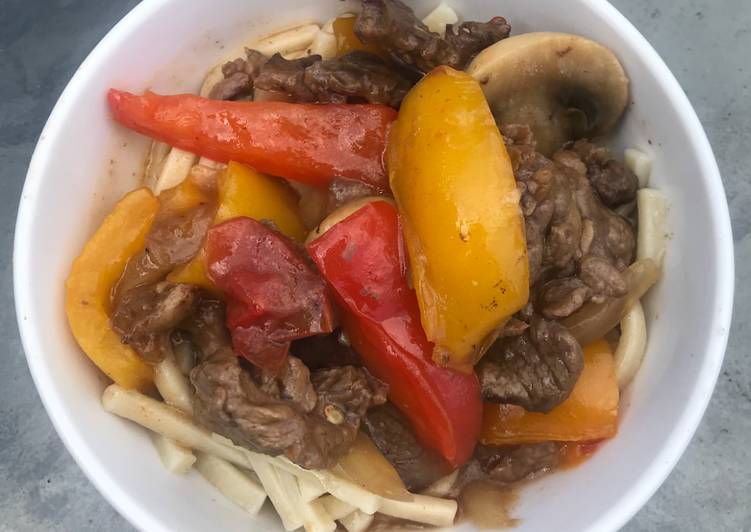
Hey everyone, it’s me again, Dan, welcome to our recipe site. Today, we’re going to make a distinctive dish, japanese rolled omelette (dashimaki-tamago). It is one of my favorites food recipes. For mine, I am going to make it a little bit unique. This is gonna smell and look delicious.
Tamagoyaki is Japanese rolled omelette with dashi and soy sauce What is Tamagoyaki, Atsuyaki Tamago, and Dashimaki Tamago? In Japanese, tamago means eggs and yaki means grill. On the other hand, Dashimaki Tamago (出し巻き卵) refers to rolled egg which includes dashi (Japanese. Japanese cuisine and dashimaki tamago are like omelettes for breakfast in Western culture.
Japanese Rolled Omelette (Dashimaki-Tamago) is one of the most popular of recent trending meals on earth. It is enjoyed by millions every day. It is easy, it’s quick, it tastes delicious. Japanese Rolled Omelette (Dashimaki-Tamago) is something which I’ve loved my whole life. They are fine and they look fantastic.
To begin with this recipe, we have to first prepare a few components. You can have japanese rolled omelette (dashimaki-tamago) using 6 ingredients and 4 steps. Here is how you cook that.
The ingredients needed to make Japanese Rolled Omelette (Dashimaki-Tamago):
- Get 2 eggs
- Take *60 ml dashi (bonito soup stock or 60ml water + 1 tsp dashi powder)
- Get *1 tsp potato starch (or corn starch)
- Prepare 1/2~1 tsp soy sauce
- Get 1 pinch salt
- Make ready vegetable oil
Mix the * ingredients in a bowl well and beat the eggs in it and whisk. Tamagoyaki vs Atsuyaki Tamago vs Dashimaki Tamago. Tamagoyaki (卵焼き), literally means "grilled egg," and is a Japanese omelette made by rolling thin sheets Dashimaki Tamago (出汁巻き卵) on the other hand, means "dashi rolled egg," and it differs from Tamagoyaki in that it includes dashi stock. Tamagoyaki is the Japanese rolled omelet that is popularly served for breakfast, put in a bento (Japanese lunch box) as a side dish or used as a filling in sushi.
Instructions to make Japanese Rolled Omelette (Dashimaki-Tamago):
- Mix the * ingredients in a bowl well and beat the eggs in it and whisk. Add soy sauce and salt. (to make a sweeter one, add about 1 Tbsp sugar when beating the eggs) You can season it to suit your tastes.
- Heat the 1 Tbsp oil in a pan over medium heat and pour 1/3 of the mixture and move it around to cover the pan. When the bottom is set but the surface is still soft, start rolling from the top.
- After rolling, push it to the back and add oil to the pan again and mix well the mixture and pour remaining half of the mixture. Repeat one more the above process.
- Cook until fully set but still moist. Brown the surface slightly to your reference.
Tamagoyaki (卵焼き), literally means "grilled egg," and is a Japanese omelette made by rolling thin sheets Dashimaki Tamago (出汁巻き卵) on the other hand, means "dashi rolled egg," and it differs from Tamagoyaki in that it includes dashi stock. Tamagoyaki is the Japanese rolled omelet that is popularly served for breakfast, put in a bento (Japanese lunch box) as a side dish or used as a filling in sushi. By adding dashi to the egg mixture, the egg gets a nice umami boost and the dashimaki tamago has deeper, more complex flavors than. • Dashimaki Tamago is rolled pan fried eggs just like Tamagoyaki (rolled omelette). The cooking and rolling technique to make Dashimaki is exactly the same The main difference between Tamagoyaki and Dashimaki is that, as you may suspect from the name, Dashimaki has Dashi mixed with the eggs. Vind stockafbeeldingen in HD voor Dashimakitamago Rolled Japanesestyle Omelette en miljoenen andere rechtenvrije stockfoto's, illustraties en vectoren in de Shutterstock-collectie.
So that’s going to wrap this up for this exceptional food japanese rolled omelette (dashimaki-tamago) recipe. Thanks so much for reading. I am confident you can make this at home. There is gonna be interesting food in home recipes coming up. Don’t forget to bookmark this page in your browser, and share it to your loved ones, friends and colleague. Thanks again for reading. Go on get cooking!

